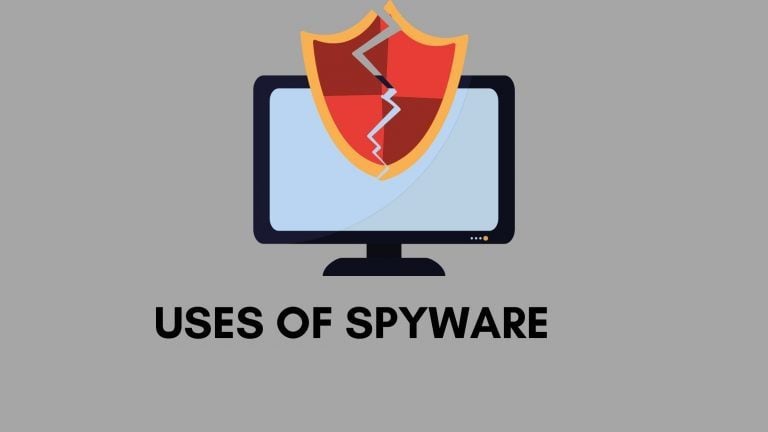Advantages And Disadvantages of Peer-To-Peer Networking

Did you know the internet we rely greatly upon today started as a military-funded experiment called ARPANET in the 1960s? At the base of it, the technology involved was Peer-to-Peer Networking. The famous Spotify, Skype, and Bitcoin also utilize the same technology.
So, what is a Peer-to-Peer Network, and how does it work? Read this article to know more.
What Is A Peer-to-Peer Network?

A Peer-to-Peer or P2P Network is a set of connected computing devices in which all computers (called the peers) can act as clients and servers. They can access data and send it to each other independently, unlike a Client-Server Network, which requires a central server to regulate all communication.
It is a decentralized network with each node possessing equal access and sharing rights, called a peer. To put it simply, it is a form of two-way data communication. Network administration is not centrally controlled. Instead, it is handled locally on each device.
Uses
Peer-to-Peer Networking has extensive uses. Bitcoin, BitTorrent, Alibaba Cloud, Correli Caches, P2PTV, and several other applications deploy peer-to-peer networking. Major uses include accelerated content delivery, file-sharing networking, digital cryptocurrencies, Peercasting, Osiris, WiFi Direct, Bluetooth, and Delivery Optimization by Microsoft for operating system updates. Even the U.S. Military admitted to having used P2P networking for warfare strategy.
Check Data Masking Vs Encryption
Types of Peer-to-Peer Networks
Peer-to-Peer Networks are of three types:

Unstructured Networks
An unstructured peer-to-peer network is made of nodes established randomly. These are easy to set up as they offer a high churn rate. A high churn rate allows peers to join and leave the network without disturbance easily.
When a query is flooded into the network, an unstructured P2P network does not ensure the resolution of the query, especially in a larger network. It utilizes greater CPU/memory as all nodes are involved during flooding. As nodes are random and not assigned specific roles, finding rare data is especially cumbersome.
Examples: Napster, Kazaa, Gnutella, Gossip, etc.
Check Broadband vs Narrowband
Structured Networks
Unlike unstructured ones, structured networks follow a well-structured topology making each peer responsible for providing a specific section of content over the network. These networks work on Distributed Hash Table (DHT) that assigns specific values to content to allocate it to the relevant node. This way, peers know which node to access for relevant data.
Structured P2P networks allow easy resolution of queries no matter how rare the requested content may be. These networks are not compatible with networks requiring a high churn rate, as setting up a new node requires work.
Examples – Tixati, Kad network, Storm botnet, YaCy, etc.
Hybrid Networks
Hybrid networks are a combination of Peer-to-Peer and Client-Server networks involving a semi-centralized server that helps peers find each other efficiently. Such a model is more beneficial than either of its component networks as it amalgamates the advantages and reduces the vulnerabilities of both.
How to Set Up a P2P Network?
Peer-to-Peer networks are relatively easy to set up. To establish one, you need at least two devices, e.g., two PCs. The connection can either be cabled or router-based. Some devices require installing networking software first, while others have built-in networking software like Microsoft Windows 10.

All you have to do is access the Control Panel > System Settings > Change Properties. Enter either the Domain name or Workgroup, whichever option applies to your network. Press OK and let the device restart. After reboot, open File Explorer > Access Menu > Network. Your network is now active.
Advantages of P2P Networking
Decentralization allows easy setup and modification of the network, making these networks highly scalable. Owing to the absence of a central server, the network is spared of any failures as a whole in case of a peer going down. Data transfer does not face congestion as other peers share the load of the faulty node. File sharing is not only easy but also fast as files are saved on multiple peers, and access and downloading occur from all available sources simultaneously. The data is also cheaper to transfer.
Disadvantages of P2P Networking
Despite multiple advantages and widespread uses, the disadvantages of P2P networking cannot be ignored. Copyrights infringements and cyber attacks are common problems faced by users. Many P2P networks like Napster were banned due to copyright infringements in the past. Such a network lacks security, centralized file storage, and backup facilities.
Content being shared cannot be verified by the receiving node. Malware and infected files are easily disseminated throughout the network. It does not allow nodes to maintain anonymity. Inexperienced users may share their sensitive information over a network unintentionally. Leechers download data but do not contribute to sharing, overloading other nodes and slowing the network down.
Conclusion
Peer-to-peer networking in the past was indeed a revolutionary invention. It made sharing data a lot easier back in the day. But with the evolution of computers and resultant security threats, its use has now been limited greatly. Newer concepts based on P2P Networking, such as blockchain, are underway. Such technologies might shape the future of networking differently. But as of today, P2P networking has a long way to go. check LAN vs WAN Port
Frequently Asked Questions
1- What are some common issues in a peer-to-peer network?
A peer-to-peer network is highly vulnerable to social attacks, leechers, DDoS attacks, the inefficient performance of the network, and difficulty in finding relevant data because of a decentralized server.
2- Is blockchain a peer-to-peer network?
Blockchain is a P2P network that acts as a decentralized system allowing individuals to perform cryptocurrency transactions independent of third parties like banks.
3- What is the importance of cable routes in a peer-to-peer network?
Cable routing protects cables from mechanical damage like abrasion, cuts, etc. When setting up a long-range physical P2P network using cables, cable routing ensures sustained connection without any damage over time.






